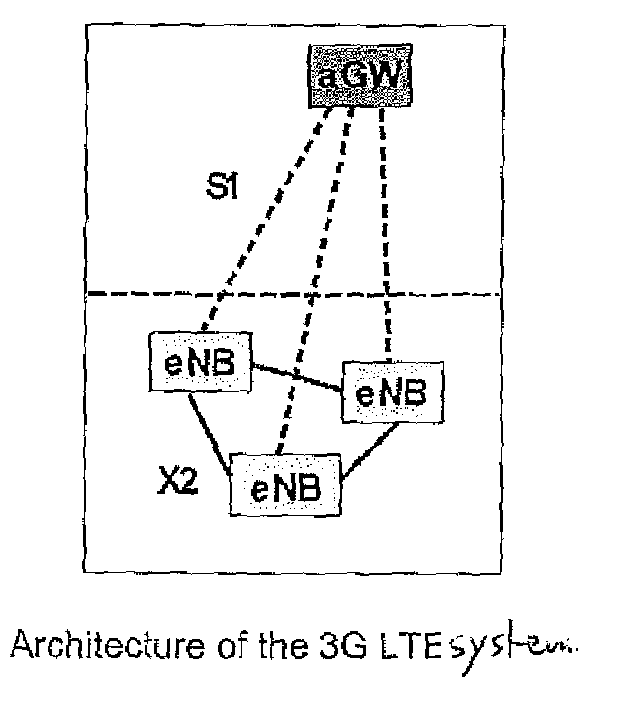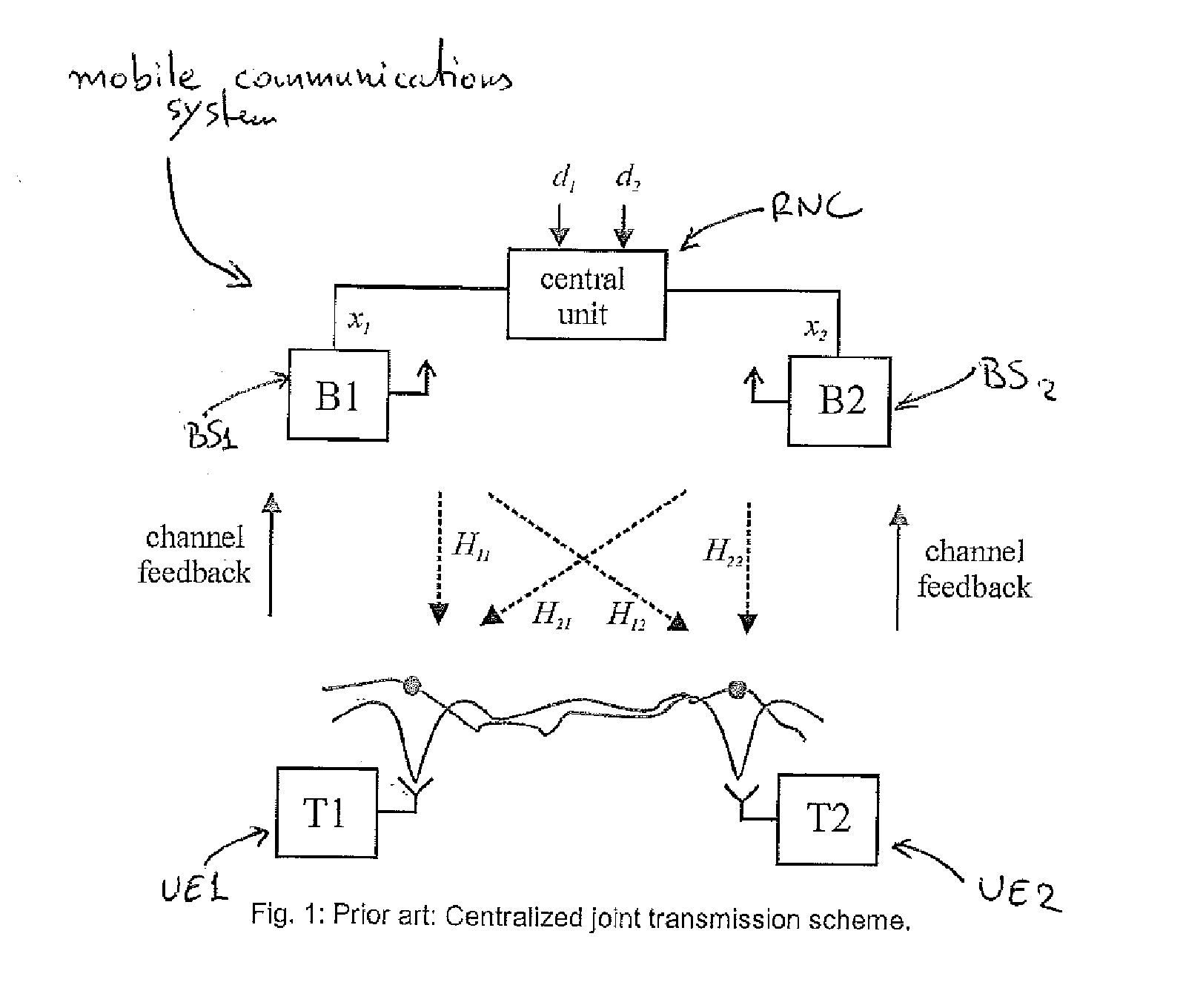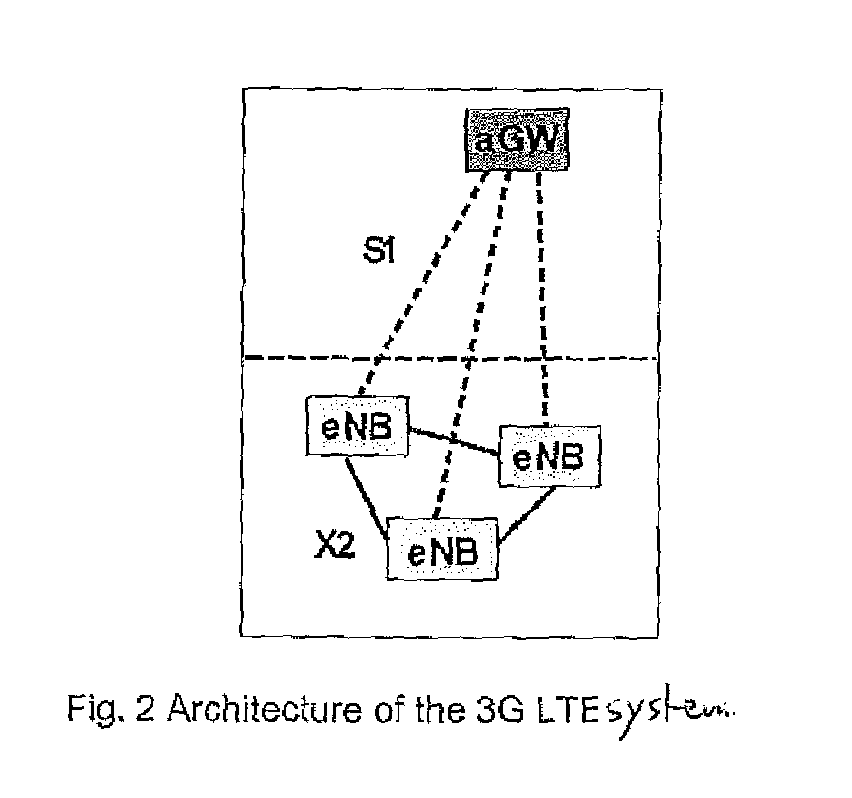Method for Network Co-ordination in a Mobile Communications System and Apparatus Thereof
a mobile communications system and network coordination technology, applied in the field of network coordination in a mobile communications system and apparatus thereof, can solve the problems of inapplicability and inability to integrate co-operative transmission within 3gpp, and achieve the effect of reducing interference, reducing interference among cells, and high capacity of users equipmen
- Summary
- Abstract
- Description
- Claims
- Application Information
AI Technical Summary
Benefits of technology
Problems solved by technology
Method used
Image
Examples
Embodiment Construction
[0030]The basic principle of the invention is shown in FIG. 3. Rather than using a central unit as in FIG. 1, data are distributed to all cooperative base stations (BSs). Moreover, the superimposed pilots of all base stations (BSs) are received by each user terminal (UE), and the compound channel information from all base stations (BSs) is fed back to the serving base station (BS). Observations are exchanged between the base stations (BS) over the X2 interface, such that the compound multiuser multicell channel matrix can be recovered at each base station (BS) involved in the cooperative transmission. At each base station, there is a local processing unit which computes the locally relevant beam forming weights and applies them to the data streams intended for the user terminals (UEs).
[0031]In order however, to make such distributed co-operative transmission efficient and well integrated within the mobile communications system, further points have also to be clarified. These points ...
PUM
 Login to View More
Login to View More Abstract
Description
Claims
Application Information
 Login to View More
Login to View More - R&D
- Intellectual Property
- Life Sciences
- Materials
- Tech Scout
- Unparalleled Data Quality
- Higher Quality Content
- 60% Fewer Hallucinations
Browse by: Latest US Patents, China's latest patents, Technical Efficacy Thesaurus, Application Domain, Technology Topic, Popular Technical Reports.
© 2025 PatSnap. All rights reserved.Legal|Privacy policy|Modern Slavery Act Transparency Statement|Sitemap|About US| Contact US: help@patsnap.com



